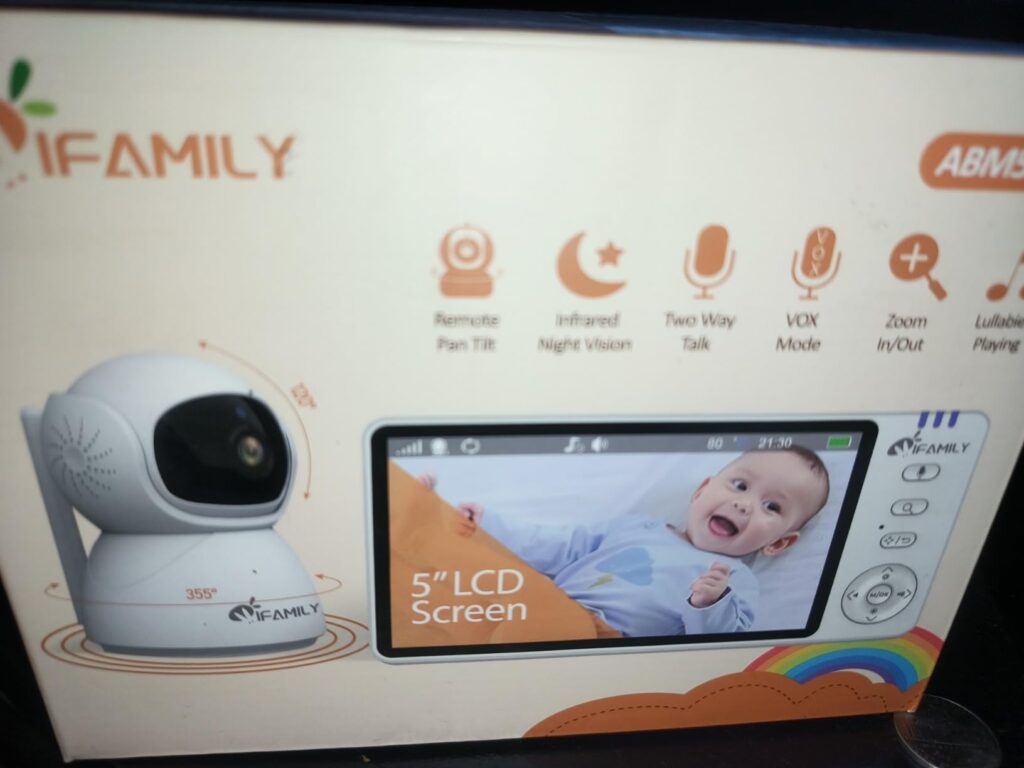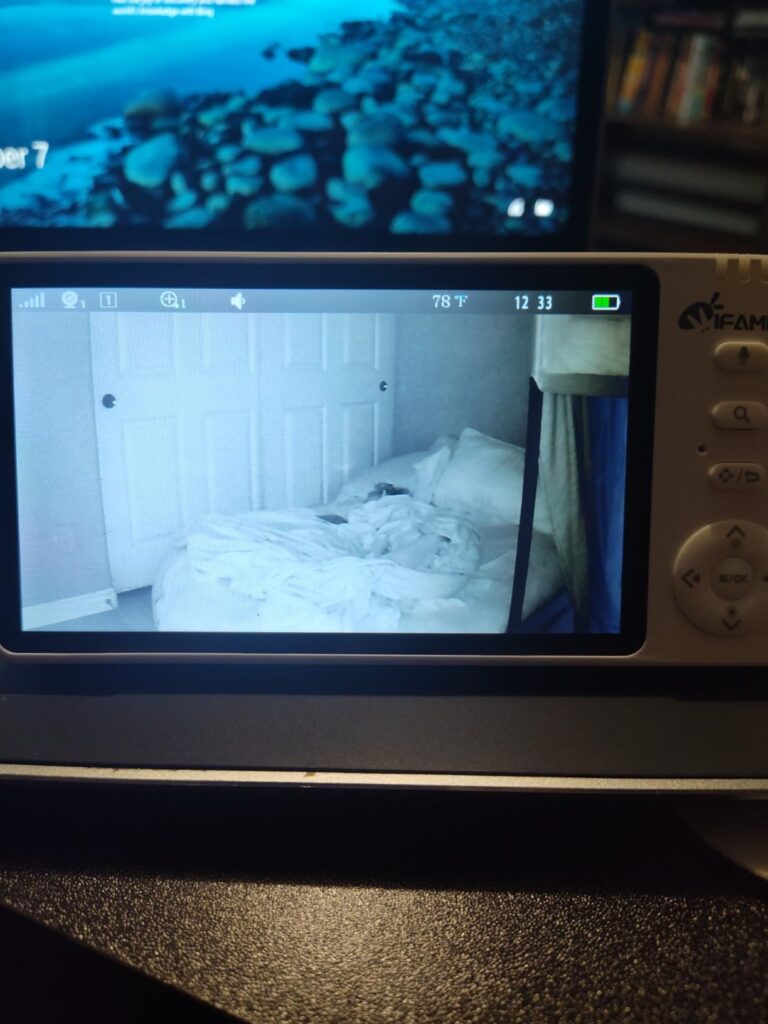Babies are light sleepers during their first six months. A mere check-in might startle and wake them up, as they are in stage 2 of REM sleep. But a baby monitor can help you keep an eye on your little one without disturbing their nap time and your routine.
However, things may get puzzling for parents when it comes to choosing the best baby monitoring device.
But no worries! This article will guide you about the things to consider when buying a baby monitor. You will explore the 12 essential features to find in a monitor.
Important Features to Look for in a Baby Monitor
Okay, mums and dads, here are a few things you should seek in a baby monitor before spending your hard-earned money.
Type of Baby Monitor

Generally, you will find 3 kinds of monitors for the nursery:
Audio Baby Monitors
These are old-school monitors that our parents used when we were playing and resting in our cot. These audio monitors don’t support video, which makes them an affordable option. They have a simple setup but lack several modern features.
Non-WiFi Audio/Video Baby Monitors
The non-WiFi audio and video baby monitors come with a screen. They often use 2.4GHz or Bluetooth technology to transmit audio and video signals.
So, if you opt for this one, it can help you listen and watch your baby simultaneously.
WiFi Baby Monitors
WiFi-enabled baby monitors are best for parents who want to monitor their infants when they are away from home. These monitors also send smartphone alerts and often have dedicated apps with special features, such as sleep tracking and file downloading.
Minimum 1080p Video Quality
If you’re choosing a video baby monitor, ensure it provides high image quality. Grainy visuals will make it challenging to track your baby’s movements. So, don’t end up picking a low-quality monitor just to save a few bucks. Try to get a monitor with at least HD 1080p resolution.
Monitoring Range
The range defines how far you can be from your baby’s room while still receiving good-quality audio and video. To determine your range requirement, ask yourself these questions.
- Do I have thick walls in my home?
- Do I need to monitor my baby outdoors?
- Is the range offered good enough to cover my home area?
Your answers will help you decide whether you should buy a baby monitor with a shorter or longer range.
Freedom of Movement
Some baby cams are fixed to walls. You can’t move them once they are installed. Contrarily, you can find monitors that are travel-friendly. So, unless you’re fine with the wall-mount baby cameras, it is best to select movable monitors.
Decent Battery Life
You can’t always be lucky to find a spot to juice up the parent unit of the baby monitor when the battery is draining. Once the battery is out, you won’t be able to monitor it until you plug it back into a charging source. Therefore, it is wise to buy a device with a long battery life and minimal charging time.
Two-Way Communication
Many baby monitors feature talk-back, allowing you to speak to your baby and hear their noises. Plus, some brands even let you play lullabies. So, if the baby is crying, you can instantly talk on the monitor to comfort them.
Multiple Cameras
Most manufacturers offer additional cameras that display the same feed. Such baby monitors are great for parents with more than one small child in the house.
Temperature Detectors
Several modern baby monitors notify you about the temperature in the child’s nursery. A few devices also report on humidity. So, let’s say you have a vaporizer or humidifier in your baby’s room. You can quickly adjust the temperature or humidity levels to ensure the environment is safe and sound.
Night Vision

Somehow, we have all seen videos of baby monitors in night vision on social media. Well! Let’s not remember the scary ones here. But actually, audio/video monitors with night vision can be really helpful if your child sleeps after the lights go off. This feature lets you watch your baby in a dark room in black and white.
Sounds and Light Indicators
But what if you forget to turn on the volume on the receiver? Or if the room is noisy? Or you have just turned down the volume because you’re taking an important call? In that scenario, monitors with lights can be super helpful. What happens is that when the baby makes a sound or cries loudly, the lights on the receiver turn on and get brighter.
Range Limit Indicator
Having an “out-of-range” indicator in the baby monitor keeps you aware of the range limit. But distance is not the only factor that triggers this feature. The size of your house and construction materials may also decrease the zone. It is like being notified that you have stepped out of the boundary (or are about to).
Volume Control
Oh! You’ll be using this feature a lot. So make sure your baby monitor has a volume control option. Some devices come with physical buttons, which are much easier to control compared to accessing volume settings by clicking on multiple screens.
Conclusion
A baby monitor can ease your life. But choosing the right one requires know-how about the features. While audio monitors can be simple and inexpensive, they don’t offer the latest traits.
On the other hand, non-WiFi or WiFi audio/video baby monitors have modern specifications. This includes options like high-definition video quality, temperature indicators, talk-back, and night vision to ensure your parenting journey becomes hassle-free.
We suggest that you note all the things to consider when buying a baby monitor mentioned in this article. While it’s totally your call, it’s best to choose a monitoring device with as many functions as possible.
FAQs
Is it safe to buy a second-hand baby monitor?
It depends on the condition of the device. If the used baby monitor looks damaged from the exterior. Or, if the LCD screen has lost its colors, you should avoid buying those devices.
Can baby monitors pick up cell phone conversations?
While it can pick up signals, the chances of having phone calls on the baby monitor are likely low. Especially if you have digital monitors.
At what age should you stop using a baby monitor?
There’s no recommended age in general. According to Dr. Hershberg, when a child shows concern about their privacy, that’s the time to remove baby monitors from their room. It can be somewhere between the 3 to 5 age range.
ALSO READ: At What Age Is It Safe for Children to Put Makeup







